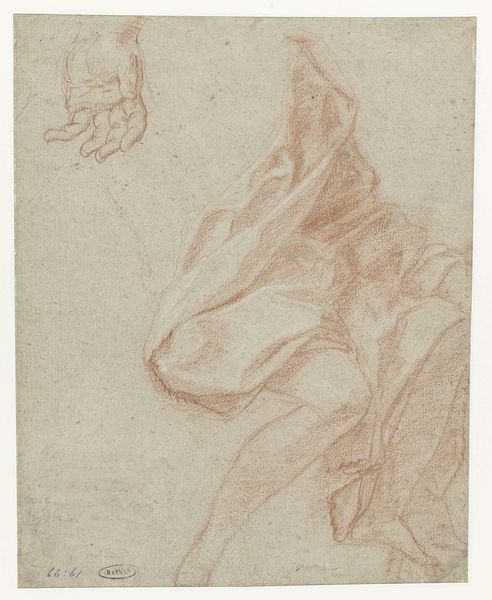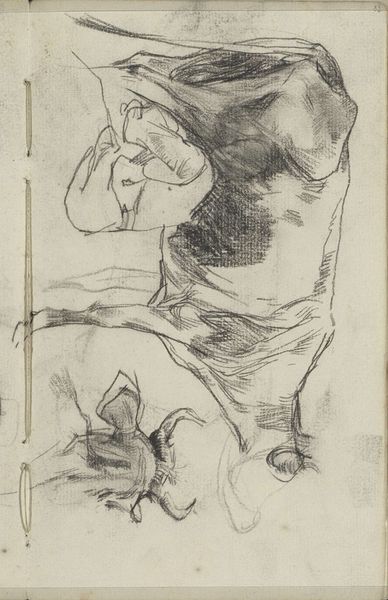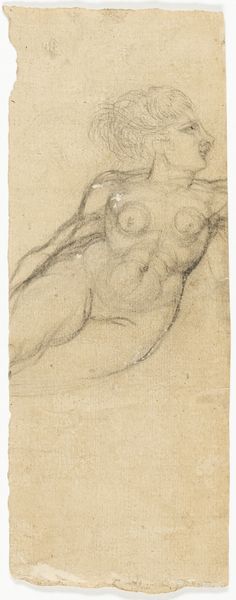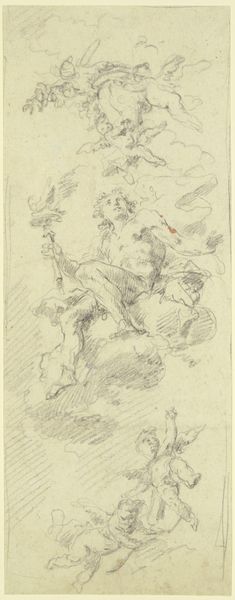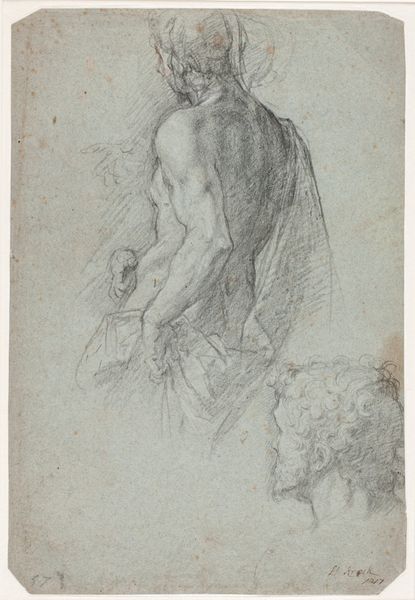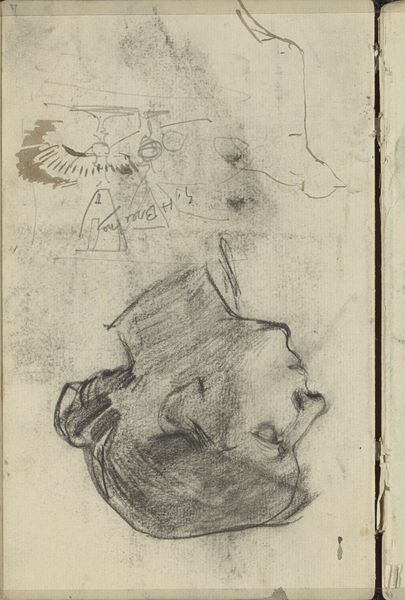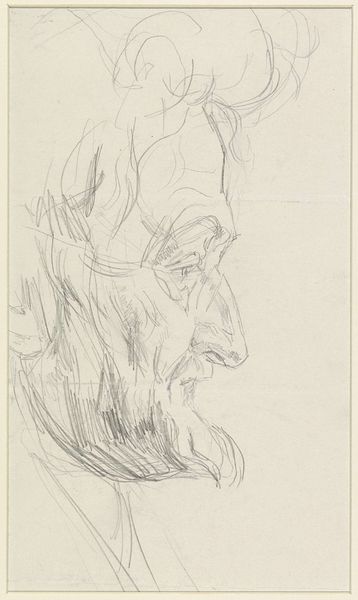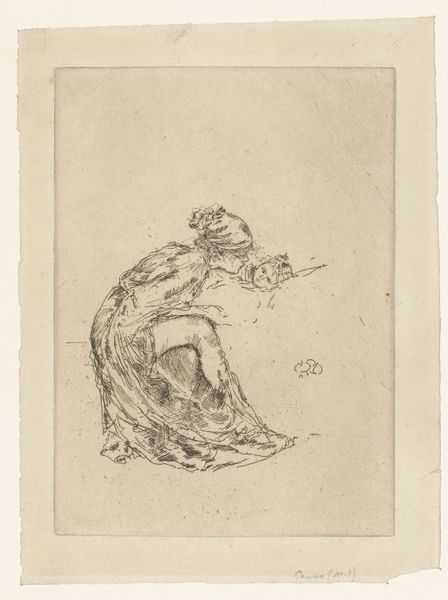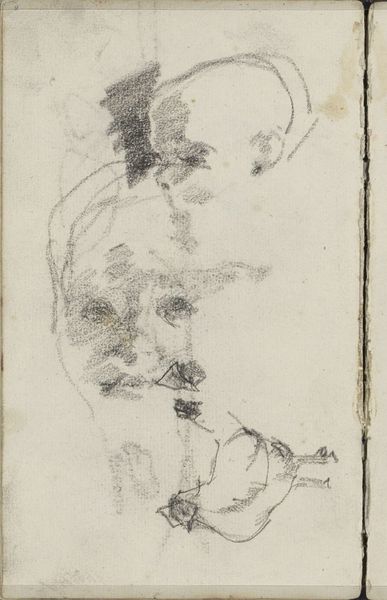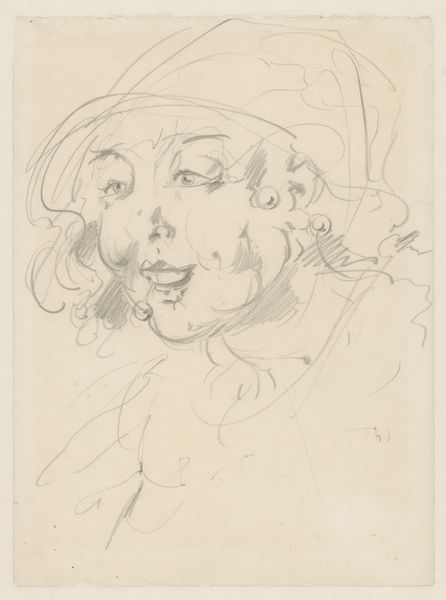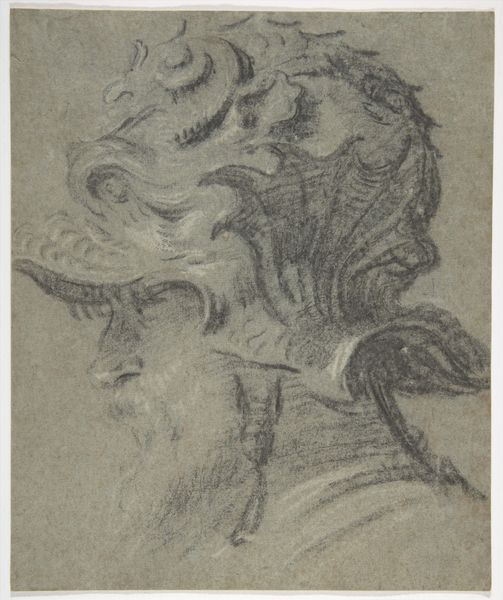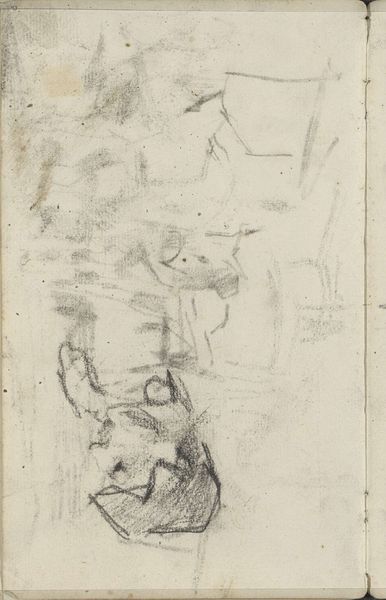
drawing, pencil
#
portrait
#
pencil drawn
#
drawing
#
baroque
#
pencil sketch
#
charcoal drawing
#
mannerism
#
figuration
#
form
#
pencil drawing
#
pen-ink sketch
#
pencil
#
line
#
portrait drawing
#
grotesque
Dimensions: overall: 29.9 x 20.8 cm (11 3/4 x 8 3/16 in.)
Copyright: National Gallery of Art: CC0 1.0
Curator: Let's delve into these Ornamental Sketches with Grotesque Masks, attributed to Pierre Puget. What are your initial thoughts? Editor: There’s a haunting delicacy to them. Despite the "grotesque" label, they possess a subtle charm. The pencil work seems precise, controlled even, yet hinting at something raw. What were these sketches for? Curator: That’s precisely what I want to examine. These are draftsmanship at work, revealing tensions embedded in the societal framework of 17th-century France, during a period of tremendous wealth disparity where visual language negotiated complex dialogues of class. They act almost as a visual resistance, echoing back the monstrous faces worn by elites. Editor: So, these grotesque masks aren't just aesthetic explorations, but rather acts of material deconstruction and political defiance through simple graphite? It’s striking that something so modest in material—just pencil on paper—could potentially harbor so much counter-cultural commentary. The scale, given the subject matter, is quite fascinating, I must say. I see almost a working-class person's vision or take on wealth and aristocracy Curator: Precisely. Note, as well, how Puget employs light and shadow not merely to depict form, but to almost sculpt the faces, giving them weight and presence, yet there's still something deeply provisional about their status on the page. The means of creating these images must also reflect how marginalized folks and communities fought and survived by 'any means'. Editor: You know, observing the execution, I can almost imagine the artist at his table. Thinking about the physical labor—the choices made in the graphite, its origins and the embodied, manual skill of the artisan creating under conditions that have a very real affect on their product—becomes vital to understanding this sketch. It reminds us of craft production embedded within political tension and complex social structures. Curator: Indeed. The intersection between art and social history encourages the reclamation of such labor practices, and provides agency and power to people whose social identity often makes them prone to violence or neglect, like women and/or people of colour, particularly within an otherwise baroque European framework of historical assessment.. They become imbued with resistance, and speak directly to power. Editor: A compelling intersection to consider indeed. These Ornamental Sketches with Grotesque Masks serve as a reminder of art's ability to unmask more than just faces; it can unveil the deeper social and economic contexts from which it arises. Curator: I agree. Seeing the drawing not merely as a product, but as a material record of socio-political struggle reshapes our understanding of the artistic process and what it means to actively witness history.
Comments
No comments
Be the first to comment and join the conversation on the ultimate creative platform.


